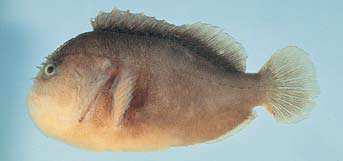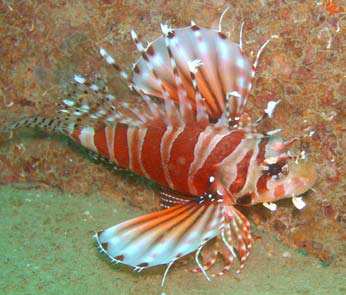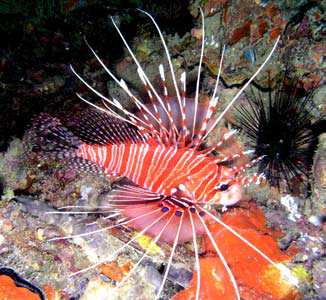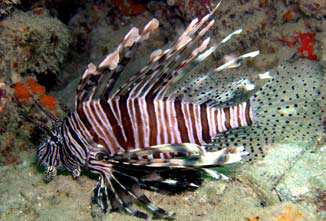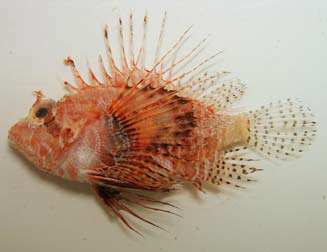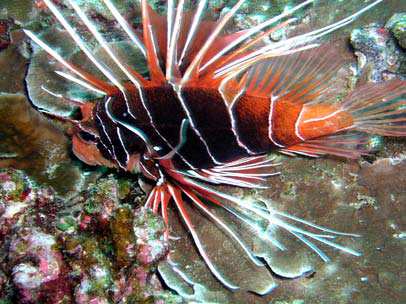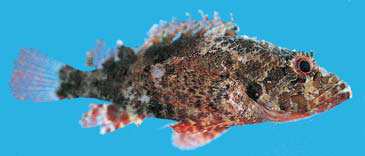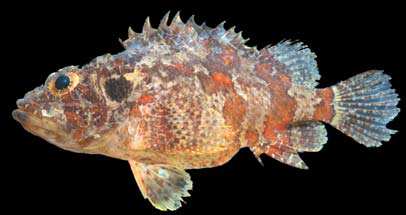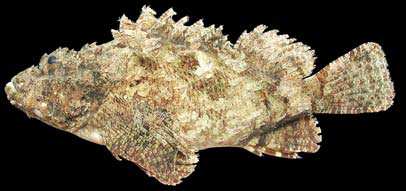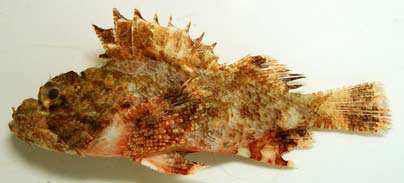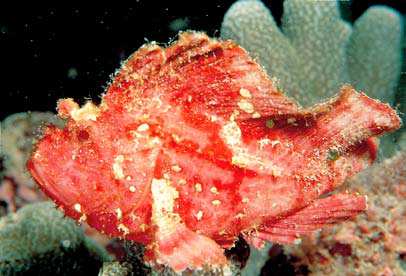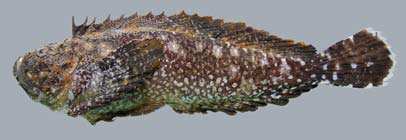SCORPAENIDAE
Scorpionfishes
By Hiroyuki Motomura
|
Small to relatively large fishes. Body usually weakly compressed; head moderate to large; eyes and mouth small to large. Numerous conical or villiform teeth on jaws. Branchiostegal rays 7, rarely 6. Gill rakers usually short to moderate, with spinous points on each raker. All species with a suborbital ridge, extending backward across cheek and usually firmly bound to preopercle; the ridge with spines in some species. Numerous spines on head in most species; numerous tentacles on head and body in some species. Dorsal fin with VIII-XVIII spines and 3-14 soft rays; spines strong, venomous in most species. Anal fin with II-IV spines and 3-15 soft rays. Caudal fin rounded or truncate. Pectoral fins usually large. Pelvic fins with I spine and 4 or 5 soft rays. Lateral line with 4-54 pored scales. Color: highly variable, from blackish to reddish, usually with spots or blotches; barred or mottled color patterns in most species. Similar families occurring in the area. Platycephalidae: head highly depressed. Ventral margin of lacrimal smooth, without distinct spines. Two dorsal fins well separated. Aploactinidae: fin rays usually unbranched. Head with comparatively blunt spines. Serranidae: no suborbital ridge attaching to preopercle. Large canine teeth in jaws in many species. Remarks. Found on or near bottom from inshore shallow waters to depths of about 1200 m; entering into freshwater in some species; pelagic or semipelagic occurring offshore in depths of 200-800 m in some species. Well camouflaged and ambush predators, feeding mainly on arthropods and fishes. Dorsal-, anal-, and pelvicfin spines venomous in most species. Ovoviviparous or viviparous. |

|
|

